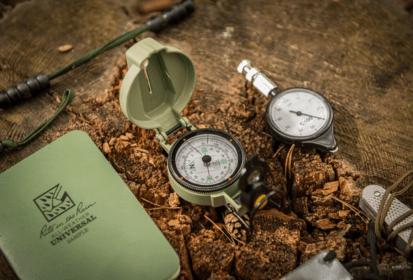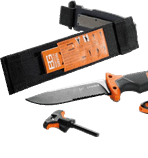You should never underestimate survival in nature, because nature does not give a second chance. Therefore, such knife must be synonym of quality, sophistication and usability. If it is to protect life, it can not be otherwise.
In human life, there are times when you have to rely only on yourself. When there is no one around to help you. In such situations you have the only chance - to rely on your equipment and experiences. Only with a combination of the above can you come to a successful end and survive some situations.
In terms of survival, everything depends (mostly) on what you have with you and on you. However, the number one item, the one that will immediately become your best friend, will be the good old knife. The choice of such knife is quite specific and each of us prefers something different here. Still, there are a few conclusions we should all agree on.
What type of knife is suitable for survival ?
Surely you immediately think of what such a survival knife should look like? For survival issues, multi-function knives are really inappropriate. Although the manufacturer will say otherwise, keep them more as backup knives in this case.
Not many people carry knives these days.At the same time, even a small folding knife can also be a survival knife. A knife that will help you overcome the pitfalls that our concrete jungle prepares for us every day.
Unfortunately, even folding knives are not really appropriate for survival in nature. Rather, look for reliable fixed blade knife made of quality materials. Will it be expensive? No doubt it will, but how much do you really value your life?
Why a survival knife needs a quality blade ?
The best choice within small to medium construction are the so-called full-tang knives. The steel is along the entire length of the knife and the handles are attached with screws or pins.
It is the most used knife design as well as the strongest. You can also see the narrow-tang design. The steel is tapered in this type and the handle is fitted onto it. However, you should definitely avoid this kind of knife design. With climate changes, the handles of cheaper knives could become unglued and loosen.
The width and length of the blade also play an important role. Some movies say otherwise, but the best survival knives have a blade length of 10 to 17 centimeters (4-6”). Longer ones can be clumsy and unnecessarily heavy (even tiring the hand). On the contrary, you can not work with shorter ones as efficiently as you would like.
The same applies to the thickness of the blade. According to different experiences and opinions, the thickness should be between 4 and 7 millimeters. Such a knife is then very strong, but at the same time still easy to control.
Serrations: yes or no ?
As you probably know, you can get a knife with a straight edge or a serrated edge. You can also have a knife with combo blade.
Leave combo blades for narrow daggers, they are the worst option for a survival knife.
Surely the average person would rather lean on their knife with their thumb than use the potential of a combo blade (after all, you're not a member of the Specnaz). Above all, you will perform fine work with the knife (making a bow, spear, ...) and serrations are not the best for such work.
But you should simply get all these options out of your head and focus only on a knife that has a straight edge. Yes, serrated edge cuts better synthetic materials, ropes, etc. However, take into account that, like other saw-like materials, you will not be able to sharpen it in nature without an appropriate whetstone. It is similar with the combo edge which, however, can certainly be an interesting alternative for someone.
It wouldn´t work without proper handle
Whether you like it or not, you need to choose your knife also according to its hadle and grip. The feeling of good grip is very important. The grip should be be firm, safe and natural.
The handles are made of many materials. Nowadays you can see carbon fibers, Mikarta® or good old wood handles. The handle should be non-slipping providing confident grip. Therefore focus on synthetic materials. They are stronger and more flexible.
Choose a survival knife for yourself …
Although we have offered you a few basic information to think about, you must always adapt the choice of a knife for survival for yourself. Remember, however, that the survival knife should primarily be simple, durable and reliable. The choice of appropriate material also helps with this.
You should never stay away from good stainless and carbon steel. Another important part is sheath, that is usually worn on your belt. Do not always opt for the cheaper option. In the end, you invest in yourself and in your satisfaction.




























































































































































